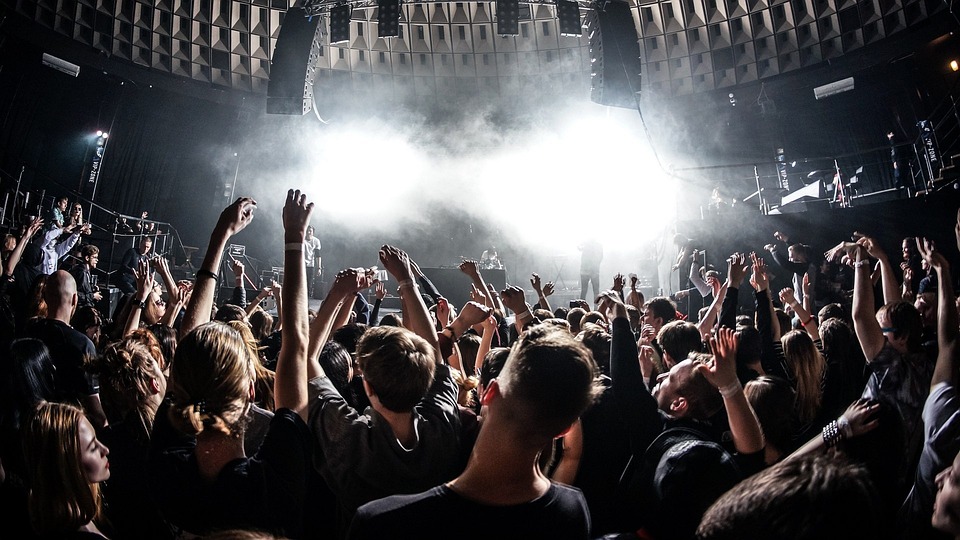Dancing Through the Decades: A Trip down Memory Lane with Dance Music Hits
Introduction:
Music has always been an integral part of human culture, and its influence can be seen in various forms, including dance. Over the decades, dance music has evolved and transformed itself, reflecting the spirit and flavor of each era. From toe-tapping swing to disco fever, from electric hip-hop to pulsating EDM beats, dance music has stood the test of time, evoking emotions and bringing people together on the dancefloor. Join us on a journey through the decades as we explore the dance music hits that defined each era, enabling us to relive those moments and appreciate the magic of music’s lasting impact.
The 1940s: Swing and Big Band Era:
The 1940s marked the pinnacle of the swing and big band era. Artists like Benny Goodman, Glenn Miller, and Duke Ellington turned dance floors into whirlwinds of energy, with toe-tapping rhythms and mammoth horn sections. Tracks like “In the Mood” and “Sing, Sing, Sing” became instant classics, conjuring images of dancers twirling across ballrooms, gracefully interpreting the music with swing steps and synchronized moves. Swing dancing became a cultural phenomenon, with dancers mastering the Lindy Hop, Jitterbug, and Charleston, bringing a new sense of vibrancy and passion to the world of dance.
The 1950s: Rock ‘n’ Roll Explosion:
As the post-war era began, a new form of music erupted, giving birth to a dance revolution. Rock ‘n’ roll music, pioneered by the likes of Elvis Presley, Chuck Berry, and Little Richard, redefined the dance scene. Electric guitar riffs and catchy beats turned dancers into rebels, abandoning formal steps for wild gyrations and free-spirited movements. The twist, a dance popularized by Chubby Checker’s hit song, became an iconic symbol of the era. Dancing became more energetic, spontaneous, and liberating, reflecting the newfound sense of rebellion and youth culture sweeping the nation.
The 1960s: The Rise of Motown and Soul:
The 1960s brought a transformative shift in dance music, influenced by the soulful sounds of Motown. Artists like Marvin Gaye, Stevie Wonder, and The Supremes created a rich tapestry of soul music, inviting people to groove and express themselves on the dance floor. Dances like the Mashed Potato and the Jerk took center stage, featuring stylized moves and coordinated steps. Soul music touched people’s hearts and encouraged them to connect with their emotions through dance, bridging racial and cultural divides in the process.
The 1970s: Disco Fever:
Disco, a genre synonymous with glitter balls, bell-bottoms, and extravagant dance moves, emerged as a cultural powerhouse in the 1970s. Pioneered by artists such as Donna Summer, Bee Gees, and Gloria Gaynor, disco music created an atmosphere of excitement and liberation. Studio 54, the iconic nightclub in New York City, became the epicenter of the disco movement. The four-on-the-floor beat, accompanied by lush orchestration, became a staple of disco tracks, driving dancers to the floor with boogie moves, the hustle, and the iconic finger-pointing moves. Disco became a symbol of acceptance, individuality, and non-stop fun.
The 1980s: Pop, New Wave, and Breakdancing:
The 1980s ushered in an era of diverse musical styles, intricate choreography, and electrifying dance moves. Pop artists like Madonna, Michael Jackson, and Prince took center stage, both with their music and their iconic dance routines. Jackson’s “Thriller” video brought dance and music together in a way that had never been seen before, captivating audiences worldwide. Breakdancing also emerged during this era, with dynamic moves like windmills, headspins, and power slides becoming the signature of the hip-hop movement. The unique combination of pop and breakdancing led to cultural phenomena like the Moonwalk and the Running Man, forever engraving these dances into our memories.
The 1990s: Rise of Electronic Dance Music (EDM):
The 1990s witnessed a revolution in dance music, as electronic beats began to dominate the airwaves. Genres like techno, house, trance, and drum and bass surged in popularity, providing the soundtrack to the rave scene. Artists like Daft Punk, The Chemical Brothers, and Fatboy Slim introduced groundbreaking electronic sounds, transforming dance music into an ethereal experience. The dance culture of the ’90s embraced the idea of dancing as a form of escapism, with dancers losing themselves in the hypnotic glow of laser lights and multi-colored strobes.
The 2000s to Present: Mainstream EDM Phenomenon:
The 21st century saw the widespread popularization of EDM, propelling dance music into the mainstream. Artists like David Guetta, Calvin Harris, and Avicii dominated the charts, fusing elements of pop, hip-hop, and electronic music. Festivals like Tomorrowland and Electric Daisy Carnival drew thousands of music enthusiasts, dancing to bombastic beats in a euphoric atmosphere. The rise of social media allowed for a closer connection between artists and fans, creating a global community united by a shared love for dance music. As we delve further into the present, dance music continues to evolve, incorporating new sounds, genres, and technologies, ensuring that the dancefloor is always pulsating with energy and enthusiasm.
Conclusion:
Dance music has accompanied us through every passage of time, weaving its way into the fabric of our lives. From the elegant swing of the 1940s to the explosive energy of rock ‘n’ roll, from the timeless soul of Motown to the iconic moves of disco, and from the vibrant pop of the 1980s to the pulsating beats of EDM, dance music has always reflected the cultural shifts of each decade. It has been a vessel for emotions, a symbol of unity, and a catalyst for personal expression and joy. So, let’s put on our dancing shoes, step onto the dancefloor, and let the rhythm of dance music transport us through the ages, allowing us to relive the magic of each era, one beat at a time.

